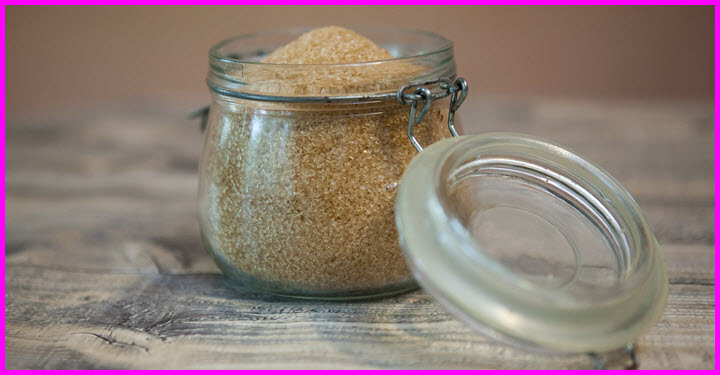This Added Sugar Is Killing Us

I hope you all know that eating sugar is really bad for your health. Sugar has a direct link to diabetes, obesity and heart disease.
Studies show that people are eating too much sugar. Yet we are not pouring sugar on our food. Much of the sugar we consume is hidden from us and that has to stop.
You need to know these 8 ways that the food industry hides the sugar content in our foods from us.
1. Calling Sugar by a Different Name
Sugar is the general name given to the short-chain carbs that give your food a sweet taste. However, sugar has many different forms and names.
The fact that companies use these different types of sugar, especially ones with more unusual names, makes spotting sugar on food labels difficult.
Dry Sugar
To stop yourself from accidentally eating too much sugar, look out for these added sugars on food labels:
- Barley malt
- Beet sugar
- Brown sugar
- Buttered sugar
- Cane juice crystals
- Cane sugar
- Caster sugar
- Coconut sugar
- Corn sweetener
- Crystalline fructose
- Date sugar
- Dextran, malt powder
- Ethyl maltol
- Fruit juice concentrate
- Golden sugar
- Invert sugar
- Maltodextrin
- Maltose
- Molasses
- Muscovado sugar
- Panela
- Palm sugar
- Organic raw sugar
- Rapadura sugar
- Evaporated cane juice
- Confectioner's (powdered) sugar
Syrups
Food manufacturers also add sugar to foods in the form of syrups. Syrups are usually thick liquids that are made up of large amounts of sugar dissolved in water.
Common syrups to look out for on food labels include:
- Agave nectar
- Carob syrup
- Golden syrup
- High-fructose corn syrup
- Honey
- Malt syrup
- Maple syrup
- Oat syrup
- Rice bran syrup
- Rice syrup
Unfortunately, the list of different names for sugar is even longer. For a more detailed review of the names that sugar can go by, check out this article.
Bottom Line: Sugar has many different names and forms, which can make it difficult to spot sugar on food labels.
2. Using Many Different Types of Sugar
Ingredients are listed by weight, with the main ingredients listed first. This means that the more of something there is in a food, the higher up on the list it appears.
Food manufacturers often take advantage of this. To make their products appear healthier, some use smaller amounts of three or four different types of sugar in one product.
These sugars then appear further down on the ingredients list, making a product look like it's low in sugar when sugar is actually one of the main ingredients.
For example, some protein bars — despite being considered healthy — are very high in added sugar. There may be as much as 7.5 teaspoons (30 grams) of added sugar in a single bar.
Below is an example of an ingredients list taken from a protein bar. The different sugars are indicated in bold.
- Protein blend (soy protein isolate, whey protein concentrate, calcium caseinate)
- Corn syrup
- Fructose
- Chocolate
- Flavored coating (sugar, fractionated palm kernel oil, cocoa, whey, nonfat milk, soy lecithin, natural flavor)
- Cocoa
- Water
- Coconut oil
- Natural flavor
- Soy lecithin
- Maltodextrin
- Guar gum
- Salt
- Carrageenan
The ingredients list makes this bar look like it contains more protein than sugar, since the first ingredient on the list is a protein blend.
However, there are four different types of sugar in this bar.
This means that, despite containing 20 grams of protein, this bar contains 29 grams of sugar. That's two more grams of sugar than a Snickers bar.
So if you're looking at food labels, be aware that there may be more than one type of sugar listed on the label.
Bottom Line: Food manufacturers can sometimes use three or four different types of sugar. These are often added in smaller amounts and can make a product look lower in sugar than it is.
3. Adding Sugar to Foods You'd Least Expect
It's common sense that a piece of cake or a candy bar probably has a lot of sugar in it.
However, some food manufacturers add large amounts of sugar to foods that are generally not sweet. Examples include breakfast cereals, spaghetti sauce and yogurt.
Some yogurts can contain as much as 6 teaspoons (29 grams) of sugar in a single container.
Even whole-grain breakfast bars, which may seem like a healthy choice, can contain as much as 4 teaspoons (16 grams) of sugar in one bar.
Many people don't realize these foods contain added sugar, and are therefore unaware of how much they're consuming.
So if you're buying food or ingredients that have been pre-packaged or processed, make sure you read the label and check the sugar content — even if the food is labeled as healthy.
Bottom Line: Sugar can be added to all sorts of foods, even ones that don't taste sweet. Make sure to check the labels of packaged or processed foods.
4. Using “Healthy” Sugars Instead of Sucrose
Food companies also make some of their products appear healthier by swapping sugar for an alternative “healthier” sweetener.
These unrefined sweeteners are usually made from the sap, fruit, flowers or seeds of plants. They may also be made by animals — like honey, for example.
Products that contain these sweeteners will often have claims on their labels, such as, “contains no refined sugar” or “refined sugar-free.” This means that they don't contain white sugar, which has been processed to remove the molasses.
These sugars can appear healthier, since some are thought to have a slightly lower glycemic index than regular sugar and may provide a few nutrients.
However, the amount of nutrients these sugars provide is usually very low and “unrefined” added sugar is still added sugar.
There is also currently no evidence that swapping one form of sugar for another will provide any health benefits, particularly if you are still eating too much sugar.
Here are a few examples of common sweeteners that are high in sugar, but often labeled as healthy:
- Agave syrup
- Birch syrup
- Coconut sugar
- Honey
- Maple syrup
- Raw sugar
- Cane sugar
- Sugar beet syrup
If you see these sweeteners on a food label, remember that they are still sugar and should be eaten sparingly.
Bottom Line: Food manufacturers sometimes replace white table sugar with unrefined or “raw” sugar. This can make the product appear healthier, but unrefined sugar is still sugar.
.
5 Combining Added Sugars With Natural Sugars on the Ingredients List
6. Adding a Health Claim to Products
7. Having a High Number of Servings per Pack
8. Making Sweet Versions of a Low-Sugar Brand
For mare info on these last 4 ways head on over to the source article.
The featured image came from pixabay.com.
